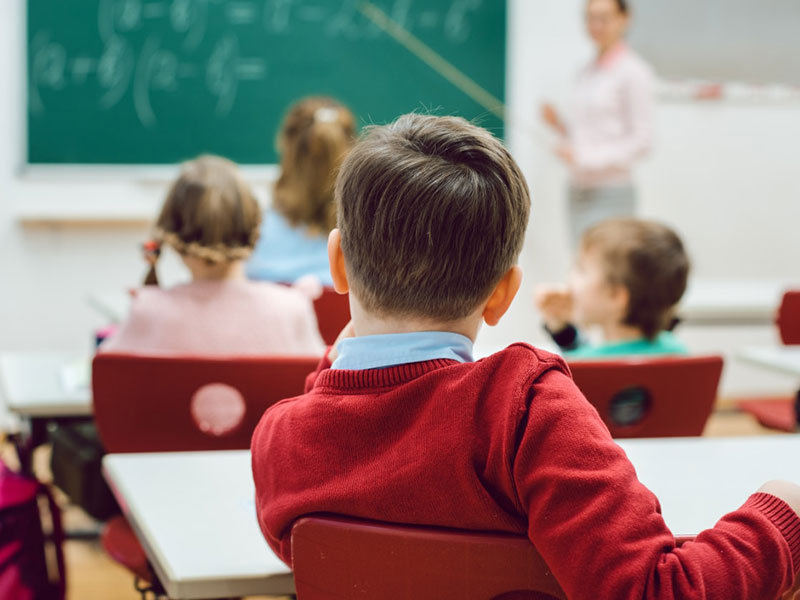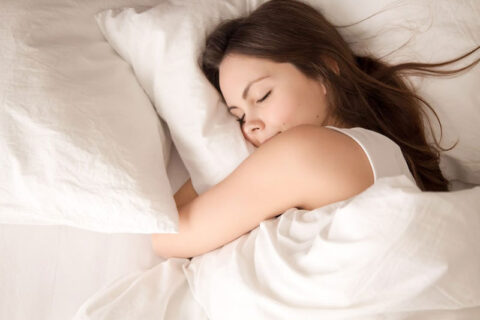Sleep Apnea in Kids Linked to Behavioral Problems

Obstructive sleep apnea, a common type of sleep breathing disorder, is often the cause of ADHD-like behavioral issues in kids. It can often also cause mood disorders, learning problems and difficulty reaching adaptive milestones.
But, while OSA is a common culprit, many physicians, therapists and parents often overlook it. Why?
The answer, in short, is that many people do not believe that sleep apnea or sleep-disordered breathing are problems in children, or they think their kids will ‘grow out of it.’
While a small percentage of children do, indeed, grow out of it, most do not. Instead, they frequently suffer for years with consequences of misdiagnosis, prescription medications that don’t work and the frequent labeling as a ‘bad kid.’
How Many Kids Have Sleep Apnea?
According to statistics from the American Academy of Sleep Medicine, obstructive sleep apnea is present in approximately 2 percent of healthy children. Some other research suggests that 1 to 4 percent of children are affected.
Two types of sleep apnea affect children: obstructive sleep apnea, which develops as a result of a blockage in the upper airway, and central sleep apnea, which develops when the part of the brain that controls breathing does not function correctly and fails to send normal signals to breathe.
Obstructive sleep apnea is the most common of the two types.
In some cases, sleep apnea in children can be caused by enlarged tonsils or adenoids. Other causes of sleep apnea in kids include:
- Obesity
- Genetic or health disorders, such as Down syndrome, neuromuscular disease or cerebral palsy
- Family history of sleep apnea
- Abnormalities of the skull or face
- Sickle cell disease
The Sleep Connection
OSA causes a frequent interruption in breathing during the night, which results in poor quality sleep. Poor quality sleep means daytime fatigue, difficulty concentrating, irritability and mood swings.
OSA can also cause:
- attention deficit
- disruptive behaviors, such as outbursts or defiance
- hyperactivity
- lack of social, emotional, cognitive and behavioral skills
- communication issues
- self-care problems
Research has also found that kids with persistent obstructive sleep apnea were seven times more likely to show learning issues and three times more likely to earn a C or lower grade average than their peers without sleep apnea or sleep-related breathing problems.
With these consequences, it’s clear that a wait-and-see approach can be risky, if not devastating, to children who are affected by the OSA.
Signs & Symptoms
Although snoring is a common symptom in children with obstructive sleep apnea, it is frequently written off as ‘cute’ and not concerning. And while a snoring child can be cute, it can also be a sign of something more serious.
Some of the signs and symptoms of obstructive sleep apnea in children include:
- Snoring. The snoring of sleep apnea is usually loud and occurs most nights, outside of illness, congestion and allergies.
- Frequent awakenings or restlessness during sleep. Does your child toss and turn, or do you notice your child stopping breathing during sleep?
- Failure to thrive. Has your child lost weight? Has he or she had difficulty gaining weight or been diagnosed with failure to thrive? Sleep apnea can result in a decreased production of growth hormones.
- Weight issues. Are you noticing weight gain in your child? Sleep apnea can also cause insulin resistance and decrease a child’s ability or desire to exercise.
- Mouth breathing
- Enlarged tonsils and adenoids
- Night sweats
- Frequent nightmares or night terrors
- Bedwetting beyond potty training years
- Excessive daytime fatigue
- Difficulty concentrating
- Morning headaches
- Daytime cognitive and behavior problems
- Problems paying attention
- Aggressive behavior
- Hyperactivity
The Consequences of Misdiagnosis
As many OSA symptoms in children can mimic behavioral disorders, health conditions and learning problems, many parents are left with concerns and worry over their child’s behavior.
In many instances, these parents turn to school counselors, pediatricians and therapists for help.
And while obstructive sleep apnea is a serious condition, even these health and mental health providers often overlook its impact on children. In most instances, these providers put affected children on different treatment plans of therapy and prescription medications.
And unsurprisingly enough, these treatments and medications fail to work, and children do not get better (and, in some cases, end up worse), which means the cycle of more drugs and misdiagnosis continues.
Treatment for OSA
Conventional OSA treatments include the CPAP (continuous positive airway pressure) machine, a device designed to blow air into the upper airway to allow your child to breathe throughout sleep continuously. Still, these devices can be clunky, cumbersome and claustrophobic for many.
As many as half of those diagnosed with OSA and given a CPAP machine do not wear it, which means poor sleep and side effects continue.
Legends Dental offers patients an alternative to the CPAP machine through oral appliances designed to keep your child’s airway open and help them breathe through the night.
Many parents report improvements in their child’s symptoms within weeks as they get more restful sleep.
Learn more about OSA and behavior disorders and how we can help by calling us now to schedule a consultation.


